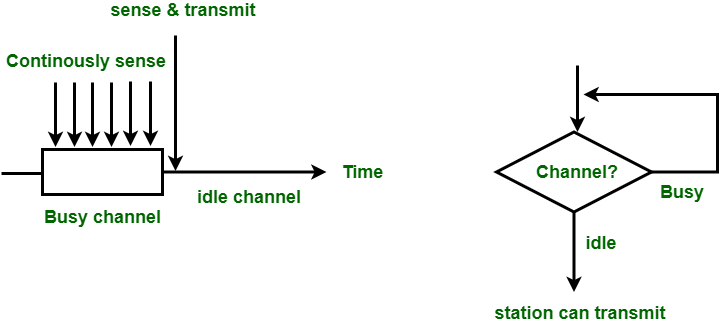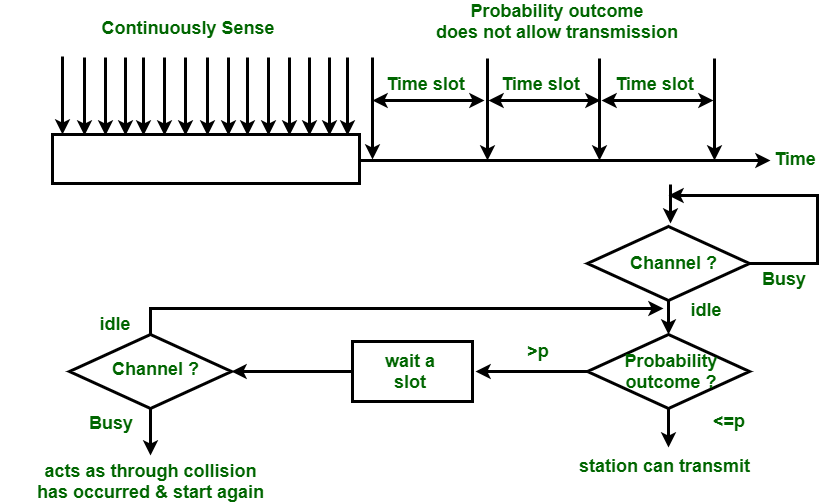先决条件 – 载波侦听多路访问 (CSMA)
1. 1-持久CSMA:
在 1-persistent CSMA 中,站点不断地侦听信道以检查其状态,即空闲或忙碌,以便它可以传输数据。在信道忙的情况下,站将等待信道变为空闲。当站点发现空闲信道时,它以概率1 无延迟地向信道传输帧。由于概率1,它被称为1-持久CSMA。这种方法的问题是碰撞的可能性很大,因为两个或多个站点可以在空闲状态下找到信道并同时传输帧。在发生冲突时,站点必须等待随机时间让信道空闲并重新开始。

2. p 持久性 CSMA :
当信道具有时隙并且时隙持续时间等于或大于该信道的最大传播延迟时间时,使用 p-persistent CSMA。当站点准备好发送帧时,它将感知信道。如果发现信道忙,站将等待下一个时隙。但是如果发现信道空闲,站立即以概率 p 发送帧。站因此等待左概率,即等于 1-p 的 q,用于下一个时隙的开始。如果发现下一个时隙也空闲,则站以概率 p 和 q 再次发送或等待。该过程重复进行,直到任一帧被传输或另一个站开始传输。

1-persistent 和 p-persistent CSMA 的区别:
| Basis | 1-persistent CSMA | p-persistent CSMA |
|---|---|---|
| Carrier Sense | When channel is idle it will send with probability 1. | When channel is idle it will send with probability p. |
| Waiting | It will continuously sense channel for transmission of frames. | It will wait for next time slot for transmission of frames. |
| Chance of Collision | In this method, there are highest number of collisions observed. | In this method, there are less chances of collision than in 1-persistent. |
| Utilization | It’s utilization is above ALOHA because frames are sent only when channel is found in idle state. | It’s utilization is dependent on probability p. |
| Delay low load | It is small because frames are sent only in idle state. | It is large when probability p is small because station will not send always in idle state of channel. |
| Delay high load | It is high due to collision. | It is large when probability p of sending is small when channel is found in idle state. |